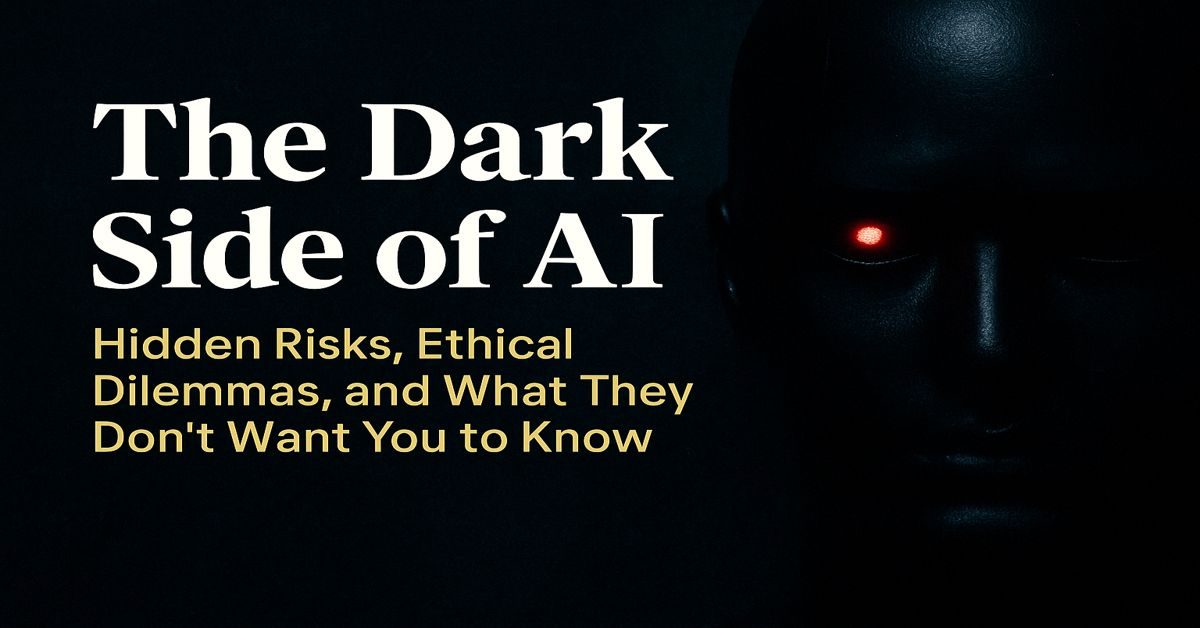Artificial Intelligence (AI) is rapidly transforming industries from healthcare and education to finance and business. While AI brings enormous potential, there is also a darker, less-discussed side. Hidden risks, ethical dilemmas, and unintended consequences are shaping how we interact with this powerful technology.
In this article, we’ll uncover the dark side of AI, explore real-world dangers, and provide insights on how businesses and individuals can prepare for an AI-driven future.
1. Bias and Discrimination in AI
AI systems are only as good as the data that trains them. If the data contains human bias, the results will amplify those prejudices. For example, hiring algorithms have been shown to favor men over women, and facial recognition systems often misidentify people of color at much higher rates.
- According to a study by MIT Media Lab, error rates for darker-skinned women in facial recognition software were as high as 34%, compared to less than 1% for lighter-skinned men.
- This means AI can unintentionally reinforce systemic discrimination, unless actively monitored.
2. Job Loss and the Automation Threat
AI promises efficiency, but at a human cost. Automation powered by AI is predicted to replace millions of jobs worldwide.
- A PwC report estimates that by 2030, up to 30% of jobs could be automated.
- Sectors such as customer support, logistics, and even creative industries are at risk.
Instead of full replacement, businesses must consider reskilling programs and transition strategies.
3. Privacy and Mass Surveillance
AI is the backbone of modern surveillance systems. Governments and corporations are using AI to analyze faces, track movements, and even predict behavior.
- Smart cities use AI for monitoring, but this raises concerns about mass tracking without consent.
- For businesses, misusing customer data with AI can lead to legal and reputational risks.
This highlights the urgent need for data privacy laws and responsible AI use.
4. Deepfakes and Misinformation
AI-generated content is becoming indistinguishable from reality. Deepfake technology allows the creation of realistic fake videos and voices, which can be used for:
- Political propaganda
- Corporate scams
- Personal blackmail
In 2019, a UK company lost $243,000 in a scam where criminals used AI to mimic a CEO’s voice.
5. Ethical Dilemmas and Regulation Gaps
The AI race has outpaced global regulations. Who is accountable when an autonomous car causes an accident? Who should be blamed when AI makes biased financial decisions?
Without clear ethical frameworks, AI risks spiraling out of control. Companies should adopt AI ethics guidelines and governments must set international standards.
6. Environmental Impact of AI
Training advanced AI models consumes massive energy. For example, training a large-scale AI language model can produce up to 300 tons of CO2 emissions, equal to five cars over their lifetime.
Sustainable AI development is a growing concern companies must look at green AI practices.
The dark side of AI is not science fiction it’s happening now. From bias and job loss to deepfakes and surveillance, the risks are real and growing. However, with responsible use, transparency, and global regulations, AI can remain a force for good.
Businesses, governments, and individuals must stay informed and proactive to ensure that AI’s future benefits everyone not just a select few.
Apsara Madhushani
7 articles